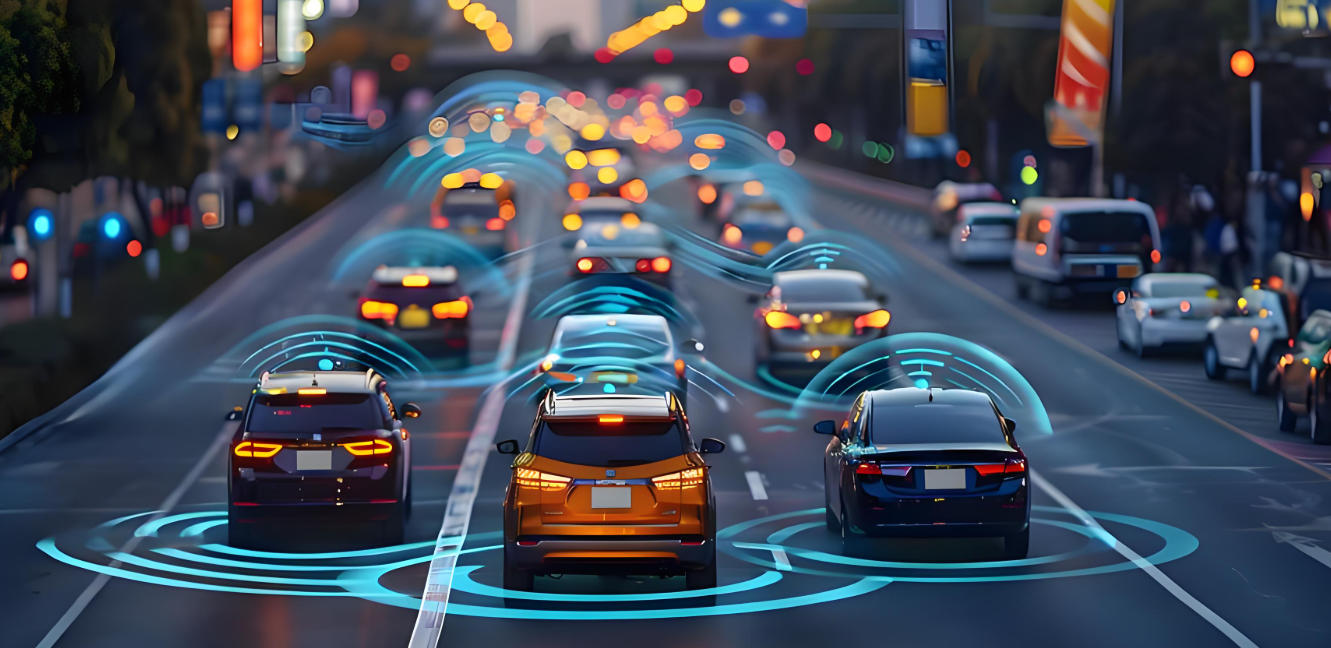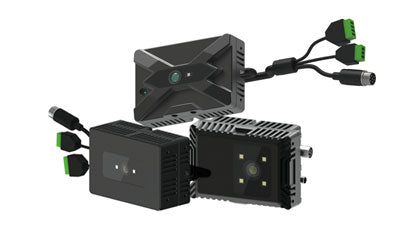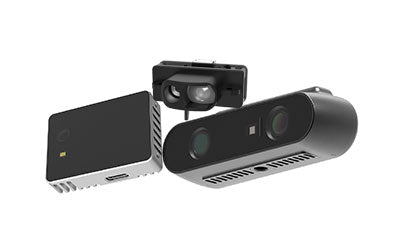TOF Technology for Smart Traffic: Vehicle Flow Monitoring & Control
- Posted by TofSensor

How can TOF technology be used for precise traffic flow monitoring and smart management at city intersections?
In today’s rapidly urbanizing world, traffic has become one of the core challenges for major cities. Congestion, frequent accidents, and low travel efficiency not only waste substantial social resources but also increase environmental pollution and put pressure on citizens’ daily commutes. Traditional monitoring methods, such as inductive loop sensors, CCTV cameras, and manual patrols, while improving traffic management to some extent, still face significant limitations in terms of precision, real-time performance, and adaptability to complex environments.
Against this backdrop, TOF-based smart traffic technology emerges as a new solution for urban mobility management.(https://en.wikipedia.org)
What is Smart Traffic?
Smart Traffic refers to a traffic management approach that uses modern information technology, communication technology, and sensing technology to monitor, manage, and optimize traffic systems in real time, enhancing traffic efficiency, safety, and sustainability.
In simple terms, it leverages 'intelligent methods' to make traffic smoother, safer, and more efficient.
Key Features:
-
Real-time Monitoring: Collect road, vehicle, and pedestrian data via cameras, sensors, and GPS devices.
-
Intelligent Control: Optimize traffic lights, road flow, and signal timing using data analysis and algorithms.
-
Prediction and Planning: Use historical data and models to forecast congestion and provide route suggestions.
-
Cross-system Integration: Integrate public transport, shared mobility, parking management, and accident response systems for comprehensive traffic management.
Smart traffic is a vital technology for modern cities to achieve green, efficient, and convenient transportation.
1. Current Status and Challenges of Smart Traffic
With the accelerating urbanization process, traffic pressure is increasing, making the development of smart traffic systems urgent. The main goal of smart traffic is to use digital, intelligent, and automated technologies to efficiently monitor vehicle flow, gain real-time insights into road conditions, and optimize the allocation of traffic resources. However, traditional traffic management still faces several challenges that hinder efficiency improvements:
-
Traffic Congestion: During rush hours and holidays, city roads often experience long queues and slow movement. Fixed-time traffic signals lack the ability to dynamically respond to real-time traffic, causing vehicles to wait excessively, reducing average speed, and increasing travel time and energy consumption.
-
Frequent Accidents: Road accidents remain a major challenge. Due to the lack of high-precision, real-time traffic data, post-accident responses are delayed, and rescue or traffic diversion measures may not be deployed in time, potentially causing secondary congestion or accidents. Incomplete data collection also affects subsequent traffic planning and risk analysis.
-
Limitations of Traditional Monitoring: Traditional methods such as loop detectors, CCTV, or manual patrols have clear limitations in precision, real-time performance, and adaptability. Conventional cameras are affected by lighting changes, poor nighttime illumination, or adverse weather, reducing vehicle recognition accuracy. Loop detectors have limited coverage and cannot provide real-time monitoring across large areas, making it difficult to meet the high demands of smart traffic systems.
Therefore, cities urgently need an advanced technology capable of maintaining high-precision perception in complex environments, supporting real-time vehicle monitoring and road management. TOF (Time-of-Flight) technology provides an effective solution. By emitting light pulses and measuring return times, TOF quickly generates high-precision 3D data, supplying real-time, reliable vehicle flow information for smart traffic systems, enabling applications such as intelligent traffic lights, adaptive flow control, and accident warnings, ultimately improving road efficiency and safety.
2. Advantages of TOF in Vehicle Flow Monitoring
As smart traffic systems demand higher precision and real-time data, traditional cameras and loop detectors struggle to meet requirements in complex urban environments. TOF (Time-of-Flight) sensors emit light pulses and measure their return times to capture 3D depth information of objects, enabling millisecond-level scanning to generate accurate 3D vehicle flow data. Key advantages include:
-
High-precision Vehicle Identification: Unlike 2D image recognition, which relies on light and angle and is prone to occlusion or weather effects, TOF captures 3D contours, volume, and distance information of vehicles. This allows accurate identification of different vehicle types, numbers, and positions in lanes, even under complex conditions, providing reliable data for dynamic traffic light timing and road management optimization.
-
Strong Environmental Adaptability: TOF sensors do not rely on visible light and can maintain stable detection performance under rain, snow, fog, or low-light conditions, ensuring continuous operation of smart traffic systems.
-
Real-time Dynamic Monitoring: TOF captures vehicle speed, spacing, and direction at millisecond intervals, generating continuous 3D point cloud data. This enables traffic authorities to make dynamic decisions, allowing traffic lights to adjust automatically and reduce congestion, while providing data for accident prevention, flow analysis, and road planning.
-
Support for Multi-Scenario Applications: TOF can be applied to intersections, highways, parking entrances, tunnels, and more. When integrated with traffic data platforms, the data can be combined with traffic flow prediction, V2X communication, and AI algorithms, enhancing road management and safety.
In summary, TOF-based vehicle flow monitoring enhances data accuracy and real-time capabilities, supporting intelligent traffic light control, road management optimization, and accident prevention, forming a solid foundation for smart city traffic systems.
3. Intelligent Traffic Lights and Flow Control
Traffic lights are a core tool in urban road management, impacting traffic order, efficiency, and safety. Traditional fixed-timing lights cannot dynamically adapt to real-time traffic, causing congestion at some intersections while others remain underutilized.
With high-precision 3D vehicle data from TOF monitoring, smart traffic lights can achieve real-time dynamic signal control:
-
Adaptive Signal Timing: Using vehicle count, speed, and spacing data, traffic lights adjust red-green cycles and green light durations to prioritize busy intersections and shorten waiting at sparse ones, reducing idle time and improving overall network flow.
-
Reduced Congestion, Increased Efficiency: Real-time 3D data across multiple intersections allows centralized analysis and optimization algorithms to coordinate traffic signals network-wide, smoothing traffic flow and lowering emissions.
-
Accident Response Optimization: In case of accidents, construction, or temporary restrictions, TOF detects changes and allows traffic lights to dynamically redirect traffic, minimizing disruption and enhancing safety.
-
Multi-dimensional Data Integration: TOF data can merge with CCTV, radar, and V2X communication for comprehensive traffic management, enabling precise decisions in complex traffic environments.
-
Future Scalability: TOF systems can extend to more intersections, main roads, and highways, integrating AI and big data platforms for intelligent, predictive traffic management across entire networks.
Thus, TOF-powered vehicle monitoring provides accurate data for smart traffic lights and enables dynamic, intelligent road management, making TOF a key technology for upgrading urban traffic systems.
4. Practical Applications and Results
In a large city pilot project, authorities deployed TOF-based smart traffic monitoring and control at key intersections and main roads. High-precision TOF sensors captured each vehicle’s 3D position, speed, and direction, feeding data into intelligent traffic lights and management platforms. The pilot demonstrated clear benefits:
-
Significant Efficiency Gains: Adaptive traffic lights based on TOF data reduced average waiting time at major intersections by ~30%, increased travel speed, and balanced network traffic flow, maximizing road utilization.
-
Lower Accident Rates: Millisecond-level detection enabled rapid identification of traffic anomalies, triggering alerts or signal adjustments. Accident response times decreased by over 20%, enhancing safety.
-
Smarter Road Management: TOF data integrated with big data platforms allowed accurate prediction of peak traffic, congestion zones, and risk areas, enabling proactive traffic management.
-
Multi-Scenario Validation: TOF sensors maintained high accuracy across intersections, ring roads, highway entrances, and tunnels, regardless of day, night, or weather, achieving full coverage monitoring.
-
Insights for Future Smart Traffic: The pilot confirmed TOF’s value in improving efficiency and safety while providing replicable experience for broader intelligent traffic management deployment. Combining TOF with AI, big data, and V2X will enable even larger-scale, smarter urban traffic systems.
In conclusion, the pilot demonstrates that TOF-based smart traffic significantly enhances urban road efficiency and safety, providing a practical foundation for intelligent signal control, dynamic flow management, and comprehensive traffic monitoring in smart cities.
5. Future Trends
With the rapid development of artificial intelligence (AI), V2X (vehicle-to-everything), and edge computing, the application prospects of TOF technology in smart traffic are becoming increasingly broad. In the future, TOF will not only serve as a tool for vehicle flow monitoring but also become a core technology for building city-wide intelligent traffic systems, driving traffic management toward greater efficiency, safety, and intelligence:
-
TOF + AI: Intelligent Traffic Management
TOF sensors can capture high-precision, real-time 3D vehicle flow data. When combined with AI algorithms, this massive data can undergo deep analysis and pattern recognition to enable traffic prediction, congestion alerts, signal optimization, and incident detection. For example, by analyzing historical traffic data alongside real-time TOF data through machine learning, the system can predict traffic flow for the next time period and automatically adjust traffic light timing, improving road utilization and reducing congestion and delays. -
Support for V2X and Autonomous Driving
With the widespread adoption of V2X technology and autonomous vehicles, precise road perception becomes critical. TOF provides real-time vehicle positions, speeds, and directions, supporting collaborative decision-making between vehicles and infrastructure. Autonomous vehicles can leverage TOF’s high-precision 3D environment models to improve path planning, obstacle avoidance, and safe driving, while traffic management platforms can optimize overall road flow. -
City-Wide Smart Traffic Management
In the future, TOF technology will no longer be limited to single intersections or local road sections but will be integrated across the entire urban traffic network, forming a unified smart traffic “brain.” By monitoring roads, bridges, tunnels, and parking areas in real time, the management system can dynamically control traffic across the city, including traffic diversion, incident response, road optimization, and adaptive scheduling. This improves overall road efficiency while enhancing traffic safety, energy efficiency, and travel experience. -
Multi-Scenario Integration and Data Ecosystem
Future TOF smart traffic systems will deeply integrate with big data, cloud computing, edge computing, and the Internet of Things, enabling real-time processing and analysis of multi-dimensional data such as vehicle flow, environment, weather, and events. By building a complete data ecosystem, city managers can more accurately predict traffic trends, optimize strategies, and coordinate with public transportation, logistics, and emergency management, providing robust support for city-wide intelligent traffic systems. -
Towards Green and Low-Carbon Traffic
Accurate vehicle monitoring and signal optimization not only enhance traffic efficiency but also reduce idling time, energy consumption, and carbon emissions, achieving a green and sustainable urban traffic management goal. TOF applications in smart traffic will become a key technology driving low-carbon, intelligent city development.
In summary, with the development of AI, V2X, and edge computing, TOF smart traffic will evolve from single-point monitoring to city-wide, intelligent, and predictive traffic management, becoming a core cornerstone of future urban smart traffic systems and providing continuous support for building efficient, safe, and green transportation ecosystems.
Extended Interpretation: Accuracy vs. Precision in Smart Traffic and Sensing
In smart traffic and intelligent sensing, accuracy and precision are often mentioned. While related, they have different meanings:
-
Accuracy: How close a measurement is to the true value. For example, a TOF distance measurement sensor that measures vehicle positions very close to the actual distance is highly accurate.
-
Precision: The consistency of repeated measurements. If a people counting camera consistently reports the same count every time, even if slightly off from the true number, it is precise.
Example:
-
A people counting software that always counts 100 vehicles when the actual number is 102 is precise but not fully accurate.
-
Conversely, if measurements vary between 98 and 103 vehicles but the average is close to the true value, it is accurate but not highly precise.
In smart traffic scenarios, achieving both high accuracy and precision is essential, while also considering the impact of field of view and focal length to ensure effective distance sensing sensor performance.
Therefore, building TOF smart traffic systems requires balancing accuracy vs. precision through algorithms while leveraging hardware like precise laser measuring devices to fully utilize person counting and distance detection sensors.
Conclusion
TOF smart traffic, through high-precision vehicle flow monitoring and real-time data acquisition, has brought unprecedented transformation to intelligent traffic lights and road management. It not only overcomes the limitations of traditional monitoring in terms of precision and environmental adaptability but also provides solid data support for future automated and intelligent traffic systems. As technology continues to mature, TOF will become the core sensing technology for smart traffic, helping cities move toward a more efficient, safe, and intelligent future of mobility.
Synexens 3D Of RGBD ToF Depth Sensor_CS30
Our professional technical team specializing in 3D camera ranging is ready to assist you at any time. Whether you encounter any issues with your TOF camera after purchase or need clarification on TOF technology, feel free to contact us anytime. We are committed to providing high-quality technical after-sales service and user experience, ensuring your peace of mind in both shopping and using our products.
-
Posted in
CS30






